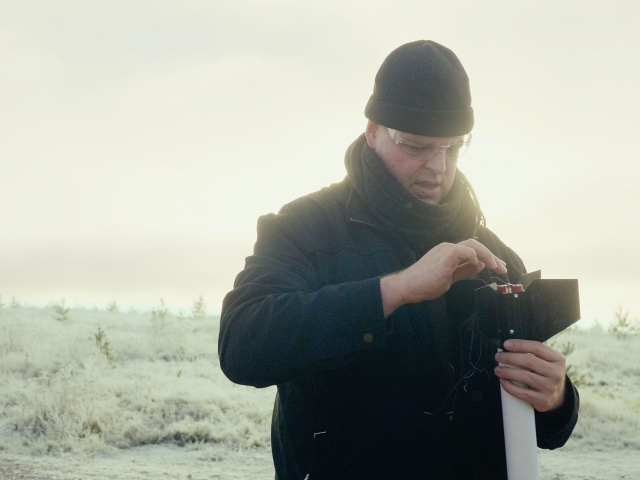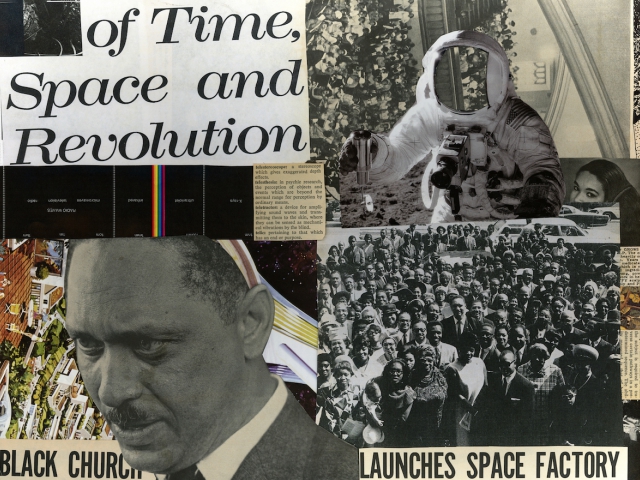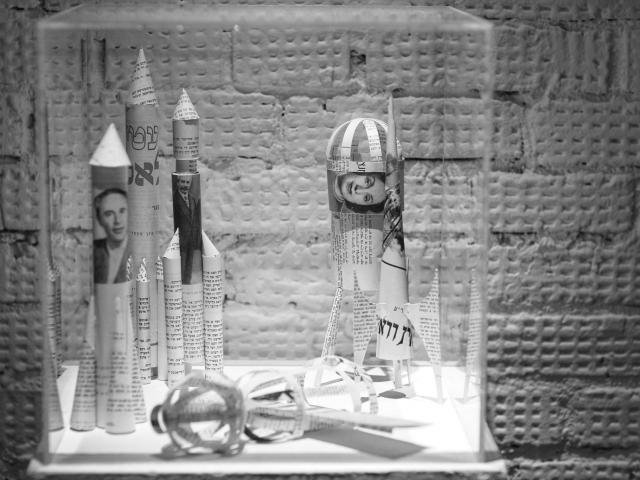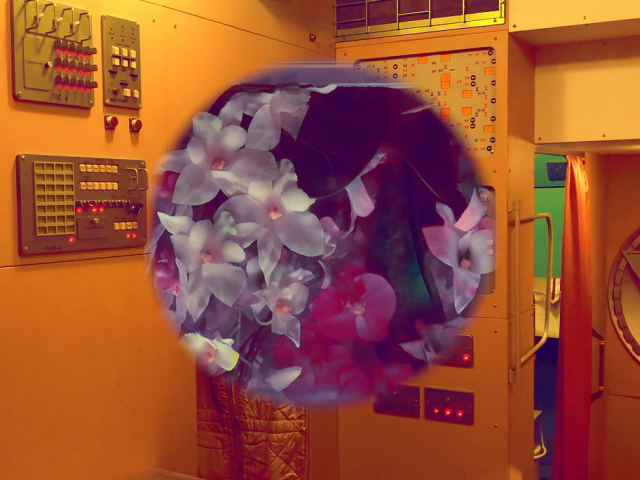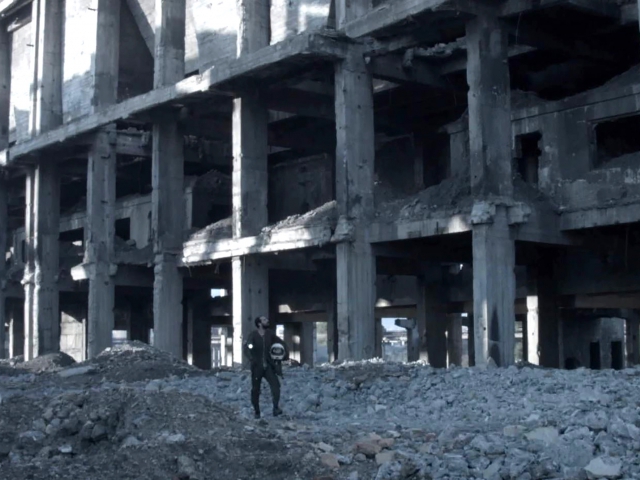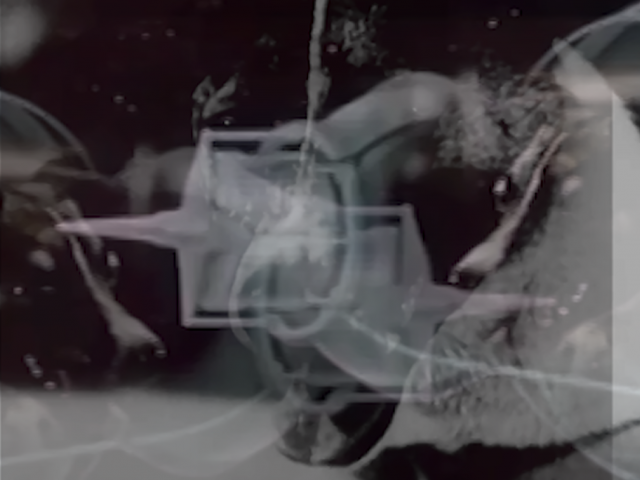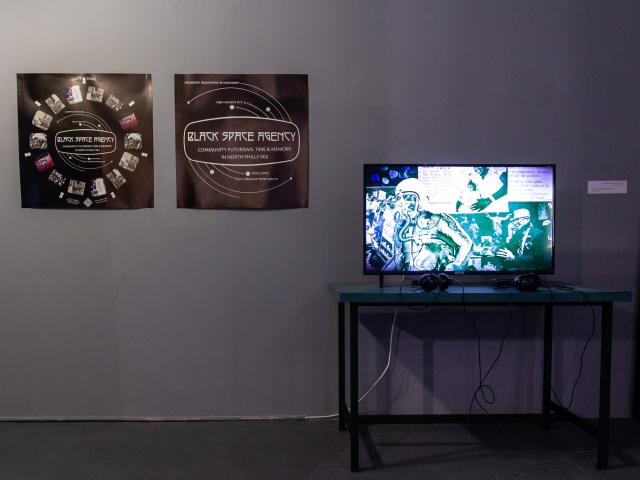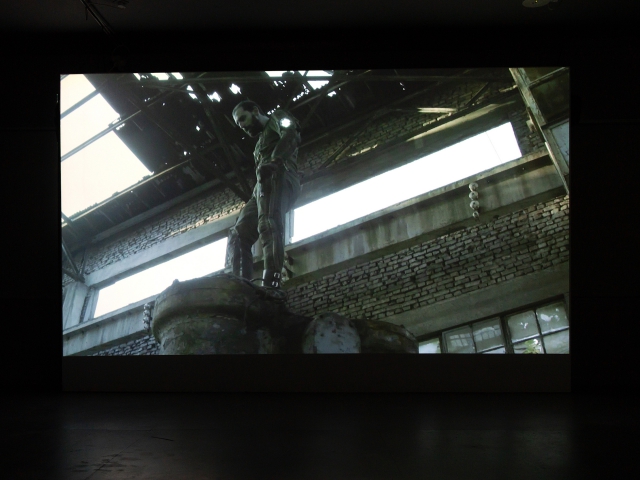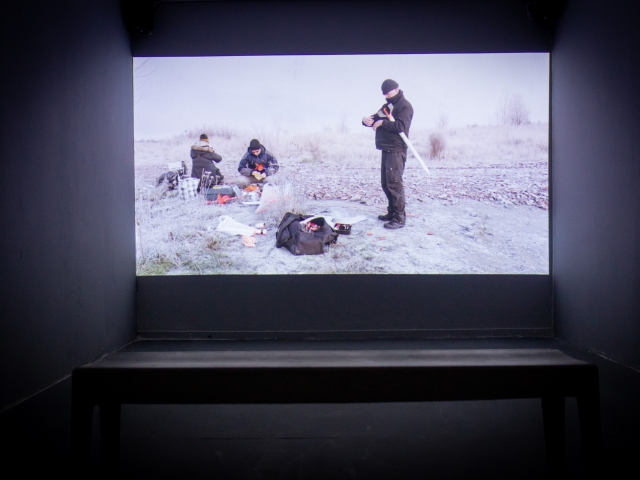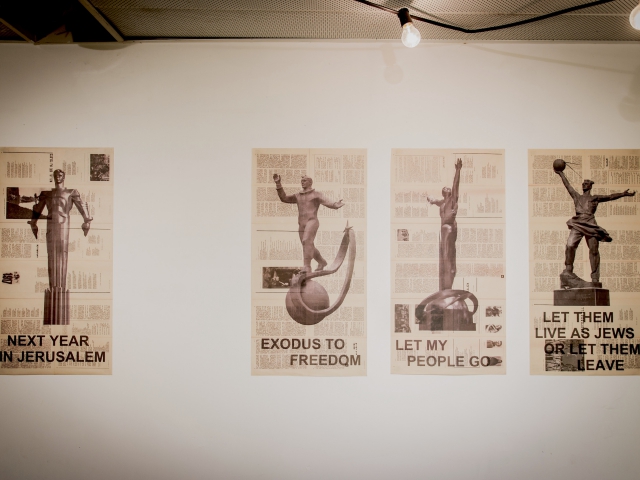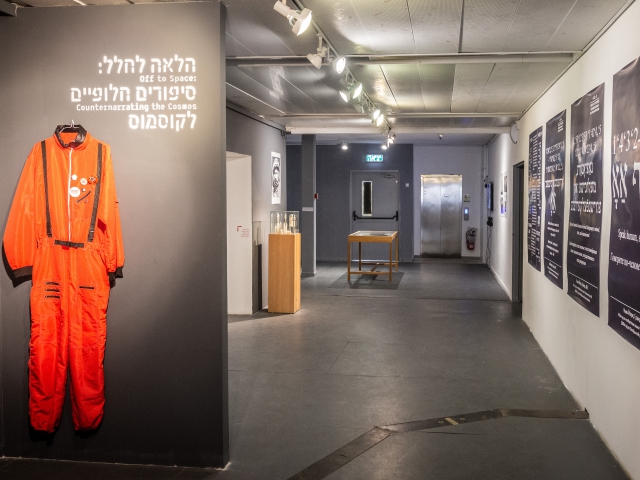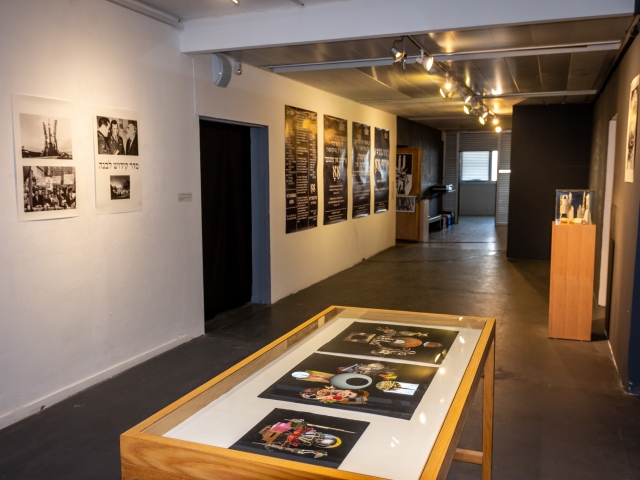- English
- Русский
Off to Space: Counternarrating the Cosmos
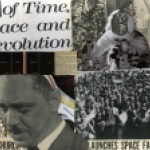
What:
exib
Where:
4 Ha'Amoraim Street, P.O Box 317, Holon 5810202, Israel
When:
22.02.2020 - 20:00 OFF TO SPACE: COUNTERNARRATING THE COSMOS
Black Quantum Futurism, Masha Godovannaya, Yevgeniy Fiks, Andréa Stanislav, Axel Straschnoy, Driant Zeneli
Curator: Maria Veits
Israeli Center for Digital Art, 4 Ha'Amoraim Street, Holon, Israel
February 22 - July 25, 2020
Israeli Center for Digital Art, 4 Ha'Amoraim Street, Holon, Israel
February 22 - July 25, 2020
Opening reception: February 22, 20.00
Exhibition working hours: Tuesdays 4 - 8 pm, Wednesdays and Thursdays 2 - 6 pm, Saturdays 11 am - 3 pm
Admission is free
Curatorial tours with Maria Veits:
June 23, 18.00 (in Russian), please register for the tour here
July 11, 12.00 (in English), please register here
Off to Space: Countenarrating the Cosmos is a group exhibition bringing together works by 6 international artists and collectives dealing with contested narratives, public history and turbulent contemporary political contexts by analyzing and revisiting space exploration strategies that started in the 20th century as attempts to widen geopolitical influence, accumulate power and make utopian futures possible.
Today’s environmental, political and economic crisis alongside global colonial ambitions that stretch to other planets instigate a new spiral turn of the space race, which is joined by new large players on the political arena. In this context revisiting the space programs of the Cold War era and the politics behind them allows for deeper understanding of the past, amplifying its untold stories and voices and thinking of alternative futures. Aimed to expand the possibilities and powers of humanity the space programs have been and remain a form of political and ideological battles both between and within societies producing them since they are closely connected to the issues of power, race, ethnicity, identity, and gender struggles, territory division and inequality.
Addressing various forms of cosmisms and counterfuturisms, the presented works - videos, prints, collages and installations - balance between facts and fiction, sci-fi and mockumentary and often juxtapose an individual story to collective history. Using events or phenomena set in the past, the exhibited works, however, have a definite connection with the contemporary moment and global political processes including migration and refugee crisis, growing antisemitism and new strategies of exile, feminist movement, decolonial discourse of reclaiming the past and the future. By creating counterhistories they deal with the issues of displaced identities and articulate cases of voice dispossession thus bringing historical justice to silenced communities and individuals. Presenting space exploration from positions of ethnic minorities, women, animals, small communities, dependent economies and displaying how affected space representations have always been by current dominant ideologies and political visions, the exhibition becomes a platform for discovering a variety of counterfuturisms and temporalities and offers artistic ways of reclaiming displaced stories and representations of the past and future.
In Yiddish Cosmos NY-based and Moscow-born artist Yevgeniy Fiks offers an alternative view on the Soviet history - by looking at it from the position of the Soviet space conquest and Soviet Jewry, he creates a futuristic narrative where the ideas of technological development merge with the principles of Yiddish culture and reinterpretation of the figure of a Soviet refusenik and his struggle for liberty of movement.
Artist collective from Philadelphia Black Quantum Futurism also explores the connection between ethnicity, race, politics and civil rights: their work Black Space Agency aims to restimulate memory of underexplored history of the Black community in the 1960s in Philly and overlays the present and future(s) of affordable housing, Black liberation, and the fight for space and time in our communities.
Human and non-human rights and sacrificing them for space research is the focus of the video by Masha Godovannaya (Russia) about Laika, the first dog in space, whose haunted spirit re-tells the story of her heroic deeds and martyrdom. Her story told in a format of a letter to the people is not a call for a revenge or restitution, it’s rather a document of a life, one of many lives that have been considered “disposable” and “killable” by the well-known human strategies of conquest and domination.
Zero Gravity — Nostalgia for Earth is Andréa Stanislav's (USA) new body of video work with accompanying series of digital photo and refractive film collages. This work is informed by research the artist undertook on space exploration at the Museum of Cosmonautics, Moscow, including the zero gravity designs of the Soyuz, MIR spacecraft and International Space Station by the Soviet Space Program architect Galina Balashova, while mining the controversial history of female contributions throughout space exploration in the 20th century. These informants are also reflected through Russian Cosmism. Cosmist ideas of technologically enabled the advancement of humankind towards natural space colonization — these ideas take shape as they are woven through Stanislav's collaged images and actions, serving as a mystic and utopic binder.
The video work It would not be possible to leave the planet Earth unless gravity existed by Driant Zeneli reflects upon the toxic communist legacy in Albania. In the center of the work is the Metalurgjiku plant built by the Chinese in the 1960-1970s, which processed the heavy metals that supplied the whole Albanian industry. Mario is a man who has always had the passion to fly and build airplanes and has the persistent desire to reach a faraway place, in the outer space. In the core of the video is a story, which the artists calls a simultaneous rendezvous between utopia and dystopia: Mario and Metallurgik, a proof of the failure of a project which was part of an ideal society, the one of Albanian communism.
Finnish Astronautical Society, the project by Axel Strasсhnoy explores the Finnish futurism and the futuristic dreams of the post-war Finland. Geographically and politically Finland has always been feeling the pressure both from the East and the West and this tension is still remaining, especially after 2014 and the wave of US and EU sanctions on Russia. The Society started to develop the Finnish Space Program in 1959, a year after NASA, it was the time when each country looked for ways to be part of the exploration of space and all rocketry research was looked at with interest by the military. However, after the Cold War was over the work of the society started to shrink and now turned into a community tied together with their interests in launching rockets models, whose story is told by Straschnoy.
Andréa Stanislav is based in Indianapolis, New York City, USA, and works in St. Petersburg, RU and Bloomington, IN. Her hybrid practice spans sculpture, video, multimedia installation, and public art. Her work has been exhibited internationally at museums, contemporary art centers, galleries, biennials, site-specific public locations and art fairs.
Axel Straschnoy is a visual artist born in Buenos Aires, based in Helsinki. His long-term and research focused projects include Kilpisjärvellä (2011-12) a planetarium film on exploration in northern Lapland under the Northern Lights (Museo de Arte Moderno de Buenos Aires, Buenos Aires, Mirta Demare Gallery, Rotterdam), La Figure de la Terre (2014) a short film based on the book The Figure of the Earth by 18th century French mathematician and explorer Pierre Louis Moreau de Maupertuis (Galería del Infinito, Buenos Aires; Museo del Cine, Buenos Aires), and the lecture-performance series, N otes on the Double Agent (2013-ongoing).
Yevgeniy Fiks is a multidisciplinary, conceptual artist born in Moscow and based in New York City since 1994. His medium includes painting, drawing, performance, and book arts. Fiks defines himself as "the Post-Soviet artist», one who has the responsibility to raise the proper understanding and critical reflection of Soviet history in order for Post-Soviet societies to move forward. His works explore the dialectic between Communismand "the West" and are based on historical research, usually of forgotten and unresolved Cold War narratives.
Driant Zeneli lives between Milan and Tirana. He represented Albanian Pavilion at the 58th International Art Exhibition – Venice Biennale, 2019. In 2017 he won the MOROSO Prize and in 2009 the Young European Artist Award Trieste Contemporanea. He was the artistic director of Mediterranea 18, the Young Artists Biennale from Europe and Mediterranean, taking place for the first time in 2017 between Tirana and Durres.He is co-founder of Harabel Contemporary Art Platform, Tirana.
Masha Godovannaya is a visual artist, experimental film maker and queer-feminist researcher, born in Moscow, Russia. Approaching art production as artistic research and collective action, Masha’s artistic practice draws on combinations of approaches and spheres such as moving image theory, experimental cinema and DIY video tradition, social science, queer theory, decolonial methodologies, and contemporary art.
Black Quantum Futurism is a multidisciplinary collaboration between Camae Ayewa (Rockers!; Moor Mother) and Rasheedah Phillips (The AfroFuturist Affair; Metropolarity) exploring the intersections of futurism, creative media, DIY-aesthetics, and activism in marginalized communities through an alternative temporal lens. Through various writing, music, film, visual art, and creative research projects, BQF Collective also explores personal, cultural, familial, and communal cycles of experience, and solutions for transforming negative cycles into positive ones using artistic and wholistic methods of healing. Through the work of BQF Collective and its collaborators, they are in the process of developing and enacting a new spatio-temporal consciousness.
The exhibition is organized by The Israeli Center for Digital Art and Creative Association of Curators TOK and is supported by Prometeogallery Milan-Lucca and the Indiana University Bloomington
Exhibition producer - Avigail Surovich
Designer - Guy Saggee



